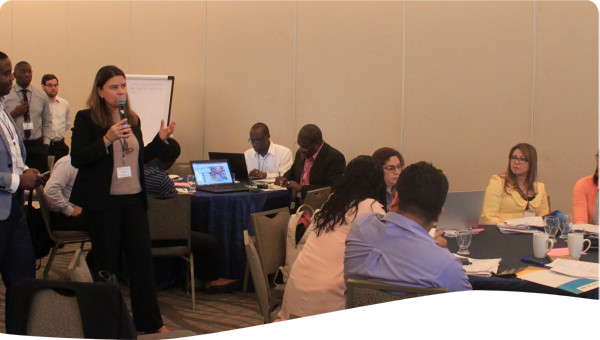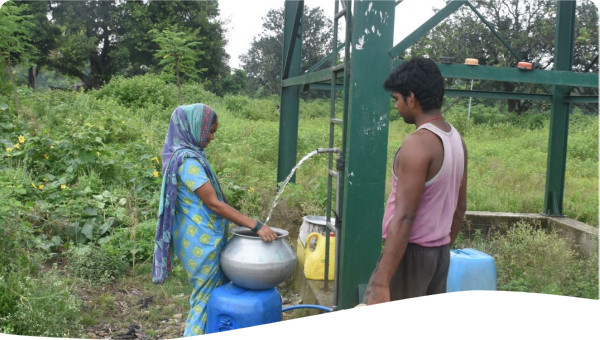The Lempa River is shared by Guatemala, El Salvador and Honduras, making its management a good example of transboundary cooperation. To reach consensus, action was taken to develop a treaty as part of a regional process. However, since the treaty was not accompanied by strategies designed by local actors, it is somewhat weak. Nonetheless, this case illustrates that political willingness is crucial for advancing towards IWRM in transboundary watersheds.
The Trifinio region covers an area of about 7500 km2 in the border areas of Honduras, Guatemala and El Salvador which converges around the mountain mass known as Montecristo Cloud Forest. The region also has several basins and Lempa a transboundary river basin is one of them which is shared by Guatemala, Honduras, and El Salvador. Other rivers include Motagua River flowing toward the Guatemalan territory; and Ulua River into Honduras. Its management represents an innovative experience for Central America. It clearly reveals the advance made in the management of a transboundary watershed stemming from the political willingness of the three countries. In 2000, the region's population was estimated to be around 670.000 inhabitants, with an average population density of 89 persons per km2. It was also estimated that 70% of the population live in rural areas. Seventy five percent of the Trifinio region is mountainous with shallow soils that limit agriculture. The area is predominantly semi-arid with scarce vegetation coverage hence a limitation for agricultural and related activities. This has been possible due to an agreement at the uppermost levels to institutionalize the cooperation among the countries through adoption of an International Treaty which materialized into a new form of institutionalization. Simultaneously, the Trifinio experience exposes the limitations of top-down processes not accompanied by strategies designed by local actors. Such a process would ensure the support and endorsement necessary to guarantee functionality and sustainability of actions in the long term.
For several decades now, the governments of El Salvador, Honduras and Guatemala have shown interest in conserving the Montecristo mountain mass, a natural area in a territory shared by the three countries. The initiative of the Trifinio Plan came about in the 1980s as part of the regional peace processes which culminated in the signing of the Esquipulas peace agreements in 1987. Within this framework and under the strong leadership exercised by Roberto Carpio Nicole, the vice-president of Honduras at the time, a process was initiated which led to the subscription of the Treaty 1986 for carrying out the Trifinio Plan among El Salvador, Guatemala and Honduras.
An initiative called Trifinio Plan was formed as part of the regional peace process which culminated in the signing of the Esquipulas peace agreements in 1987. Later, with the support of the General Secretariat of the Organizations of American States (OAS) and the Inter-American Institute for Agricultural Co-operation (IICA, by the Spanish acronym), the Trifinio Plan was developed.
The Trifinio Plan allowed for joint actions of cooperation to be carried out among Guatemala, El Salvador and Honduras in a natural area of great value. At the same time, it served as an example of practical efforts being carried out in Central America toward integrations of river basin management. This led to establishment of an international park shared by the three countries taking into account all aspects of IWRM.
The plan aimed to contribute to the integration of the borderland belt. This implies promoting socio-economic development along with conservations of the Montecristo Cloud Forest and the Fraternity Biosphere Reserve. The project benefited directly only nine municipalities, and also benefited indirectly 22 of the 45 municipalities from the region. Now the project is delimited by a perimeter made up of the highways of Metapán, Esquipulas and Ocotepeque. In the case of El Salvador, there are essentially two focus areas (Matapan and San Ignacio) which due to the absence of communications routes has received a distinct treatment in terms of the involvement and the actions carried out.
This case shows that political willingness (at the highest level) from the countries involved is crucial for advancing toward an integrated water resources management of transboundary watersheds in Central America.
The establishment of common institutional framework is indispensable for managing the territory of a shared basin.
Mechanisms for formulating coordinated interventions are needed and ensuring efficient mechanisms for local participation in decision making, planning and action is crucial. Invest in processes to build local capacities for the management of natural resources.
Protectionist approaches impede to advance in the management of resources with an IWRM approach in the watershed.
The limitations of incorporating vulnerability and risk in the management of a shared watershed.
The lack of sustainability and efficiency of actions planned in a top-down approach and a centralized management relying solely on the involved Ministries.
 Case studies
Case studies



